The world’s most elaborate and spectacular public display of harp guitars has ended. It was an extremely popular 7-month exhibit at NAMM’s Museum of Making Music and took up a good year of my life to help create as guest curator. It told – and showed – the story of the harp guitar in America, with a brief European introduction and look at the modern resurgence and future.
Here’s a final walk through (all images copyright and courtesy of The Museum of Making Music):

Immediately upon entering the NAMM lobby one is treated to an instrument never previously seen in the United States. I had just brought it over from Genoa, Italy.

By Nicolo Priano, circa 1920s, inspired by the incredible instruments of the Candi brothers.
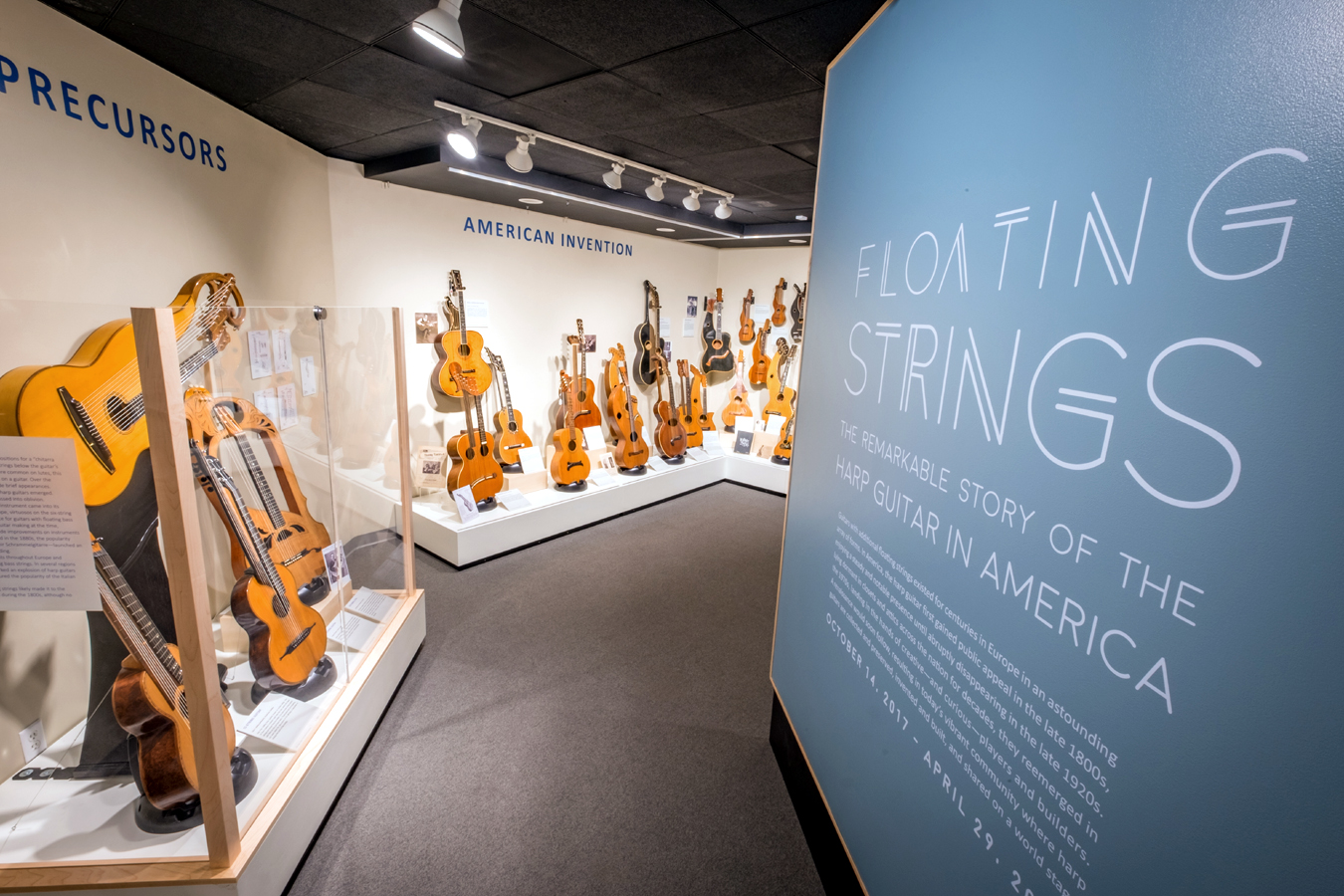
Upon entering the hall, one first learned of European predecessors and contemporaneous hollow-arm instruments. John Schneiderman kindly lent the important 1860 Scherzer in the center.
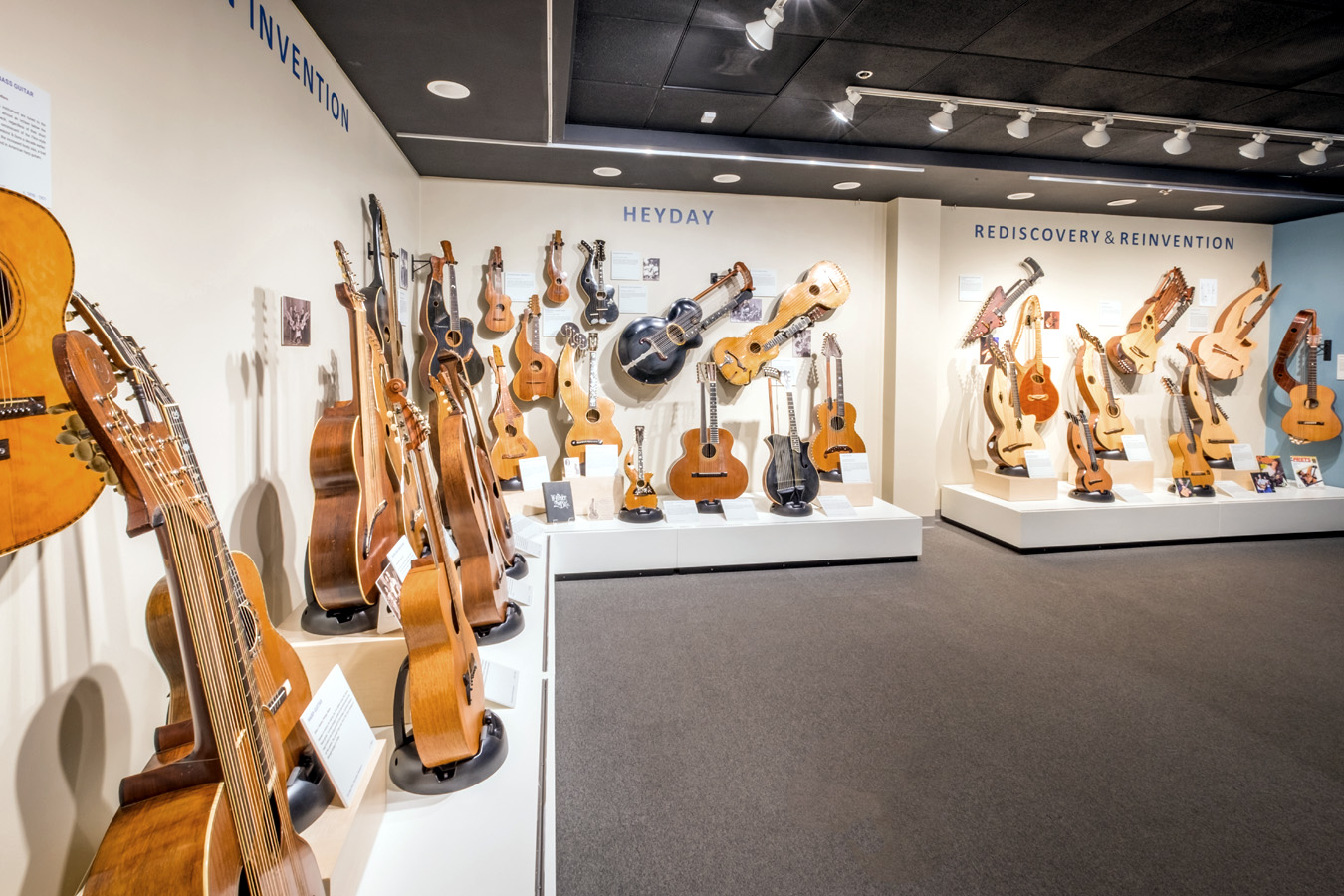
Continuing into the gallery revealed the vast diversity. You’re seeing it here without the plexi protective panels. We began the story with “American Invention.” At far left, the Harwood and Regal represent the first production design (the body plan used by the Regal) and first production manufacturer Jenkins (Harwood brand) in America.
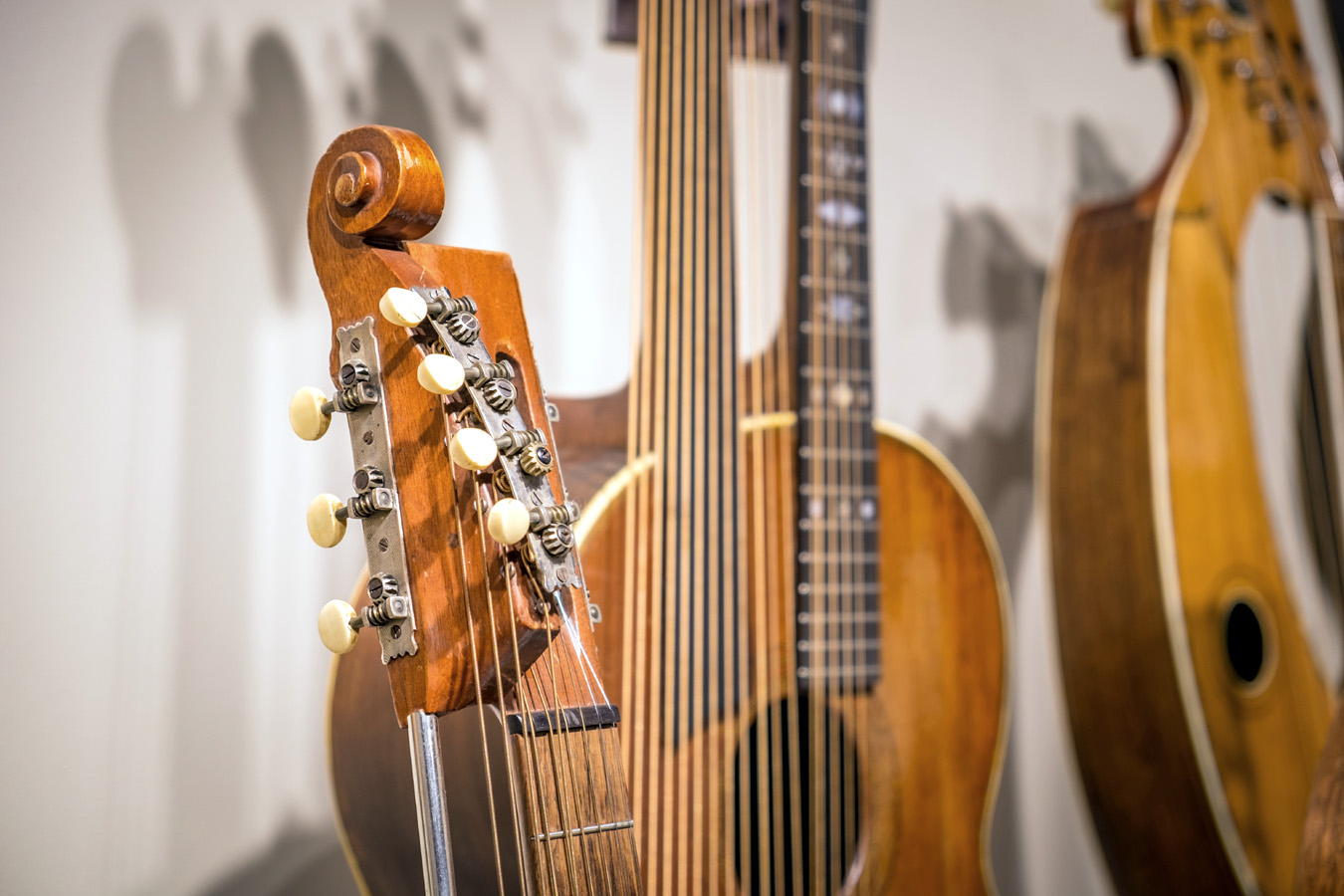
Dahlman’s 1892 patent, built here by C. Akeson in Minneapolis illustrated the immediate explosion of inventions to incorporate floating sub-basses or “harp” strings.
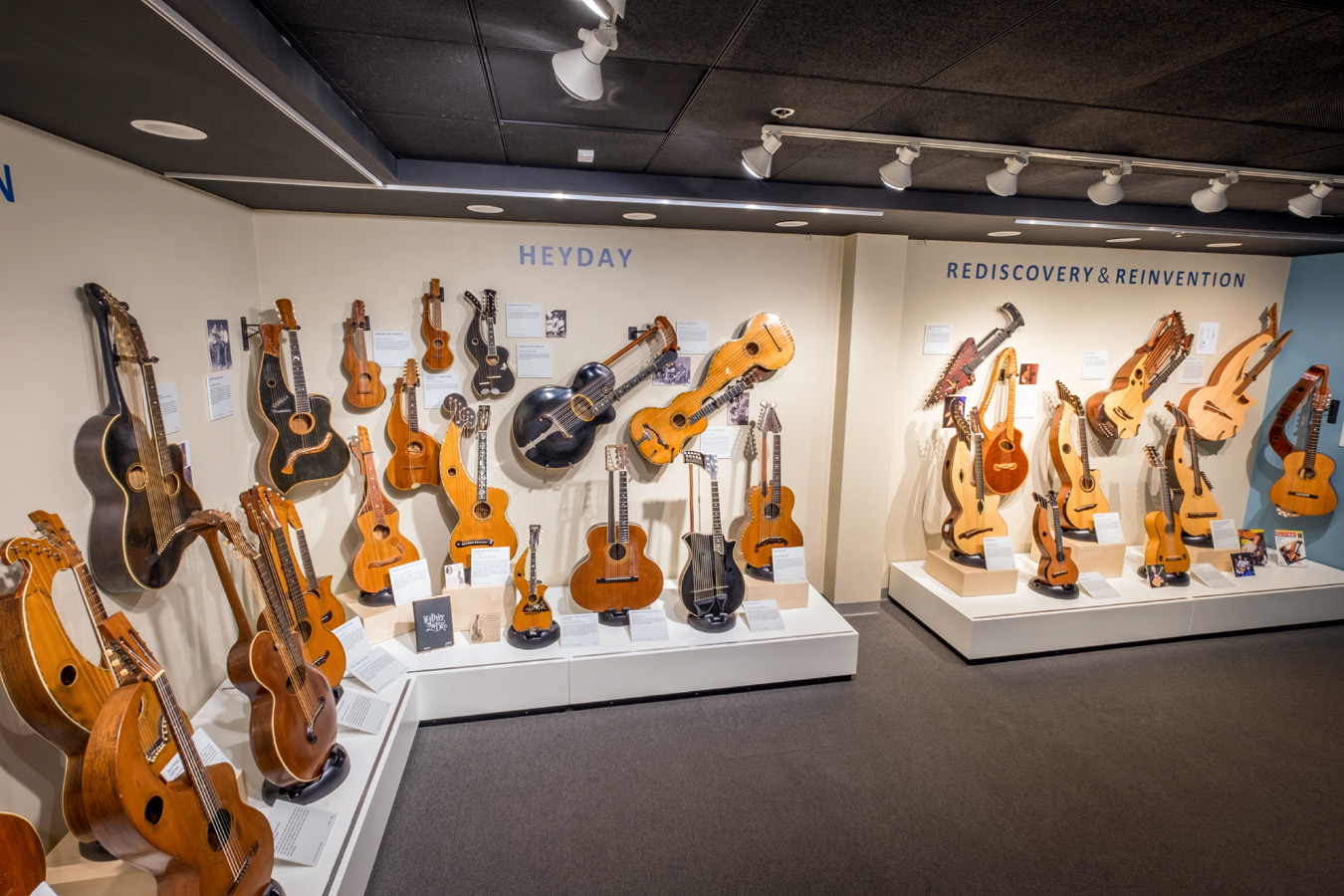
America’s Heyday explored continual new designs and the instrument’s incredible popularity within mandolin & guitar groups, vaudeville and nearly everywhere live music was performed.

iPad displays throughout the room provided additional information and sound samples.
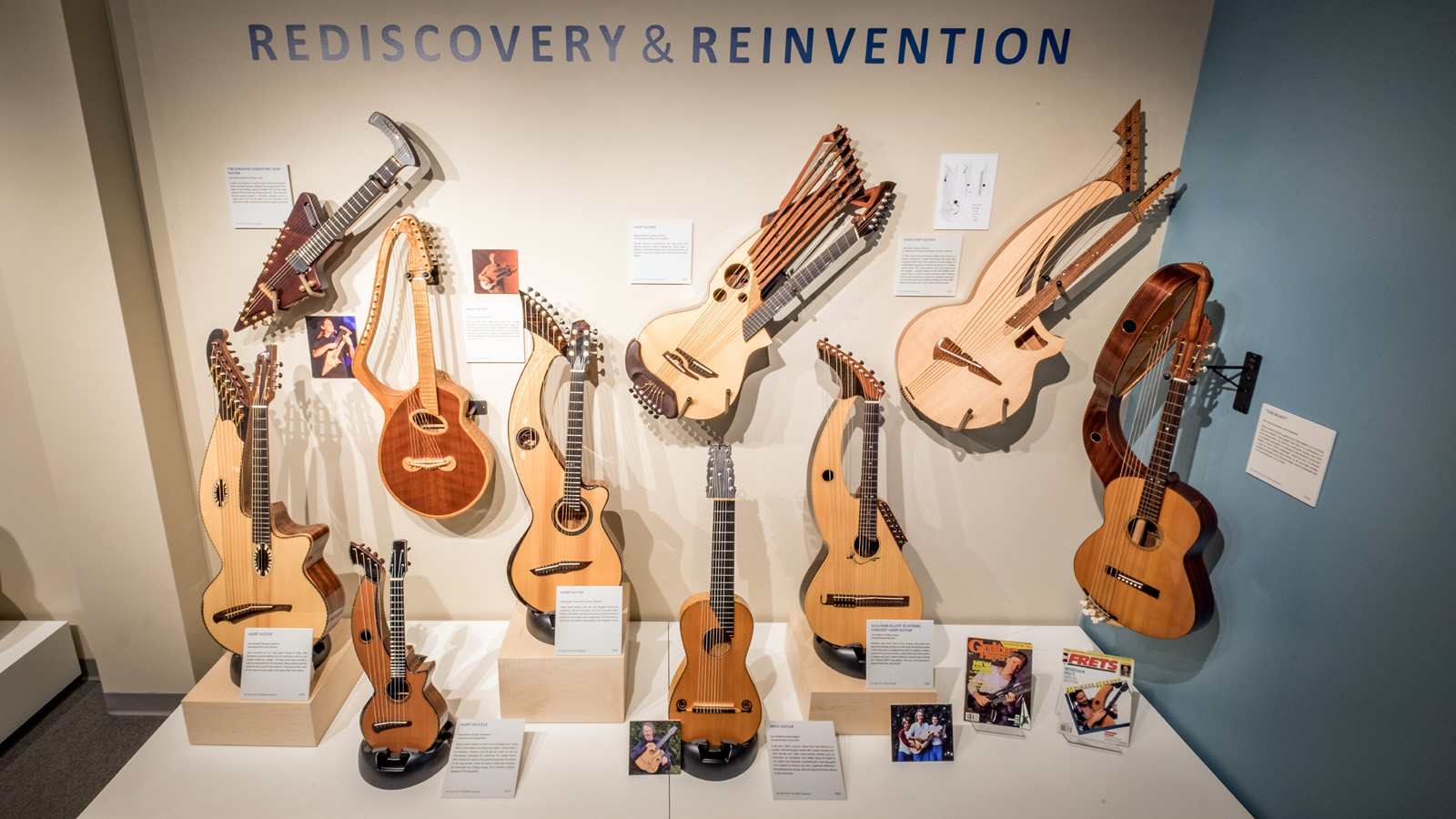
We discussed why harp guitars died out in America…and how they slowly, then exponentially, have been roaring back to life stronger than ever.
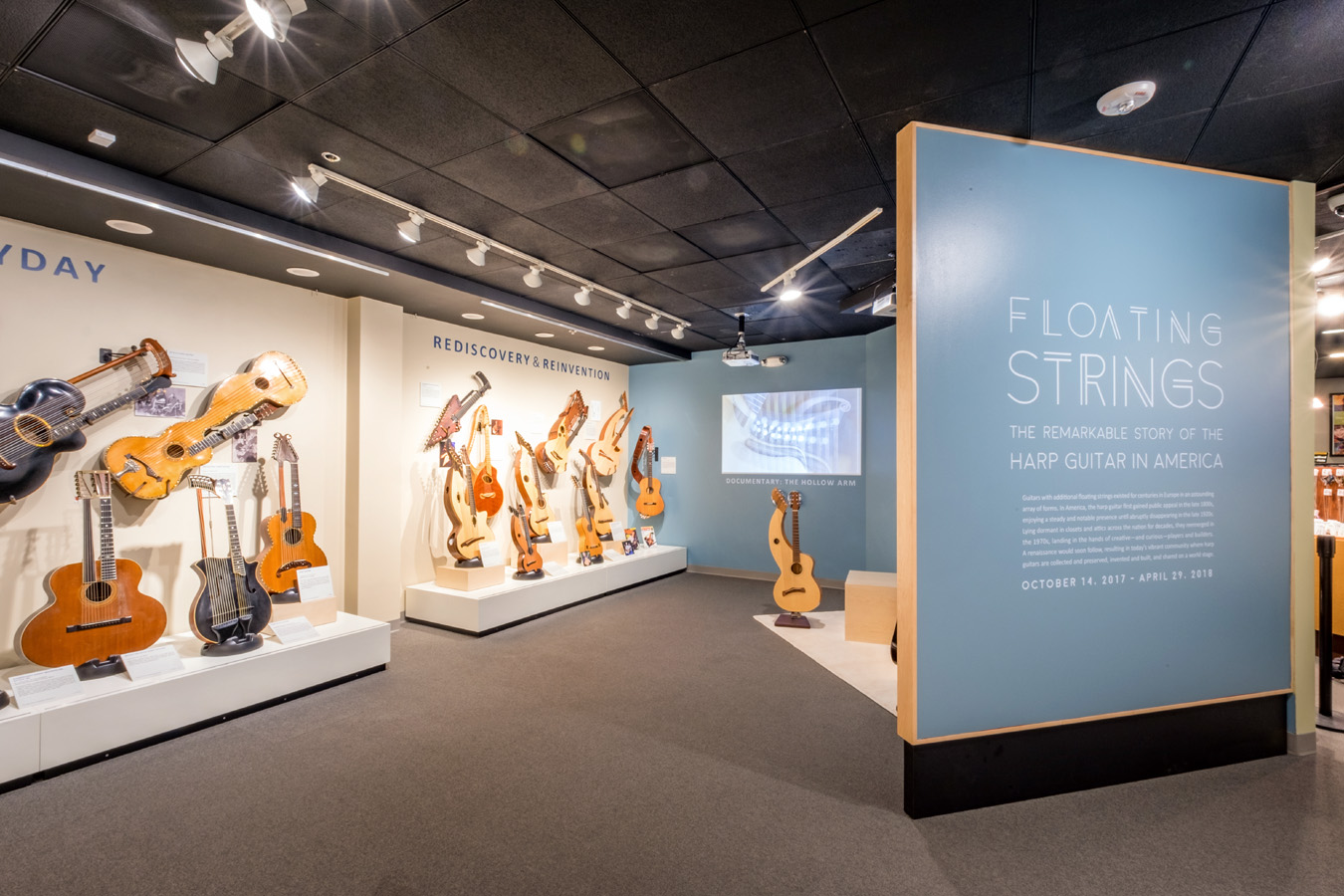
On the far wall, the Alden Morgan/Powell brothers documentary film The Hollow Arm was projected 24/7.
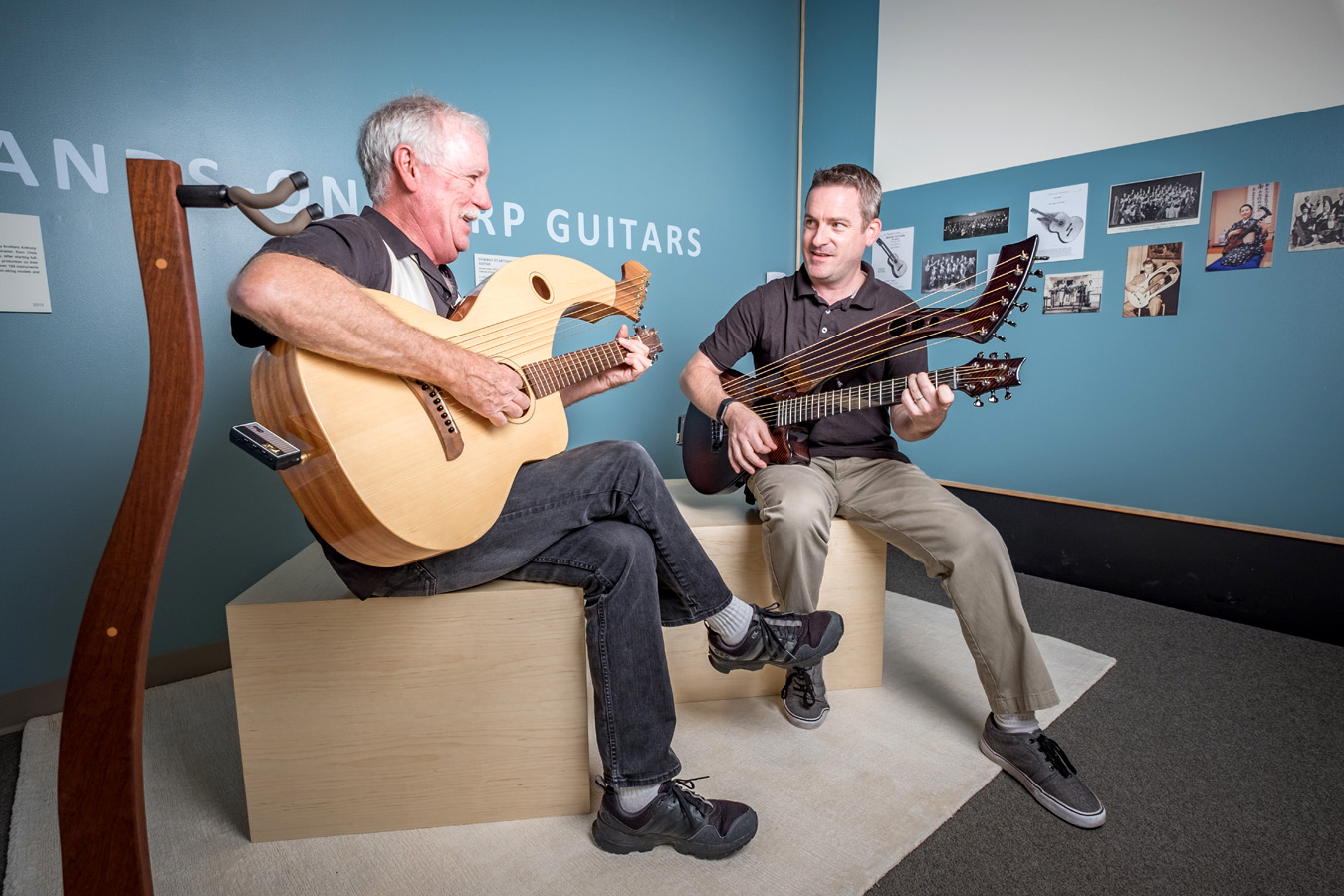
The hands-on instruments were hugely popular during the run of the exhibit. Here, staffers Bill and B.J. demonstrate a Tonedevil and an Emerald. Tonedevil was our sole sponsor from the harp guitar community – and of course, a part of the story.
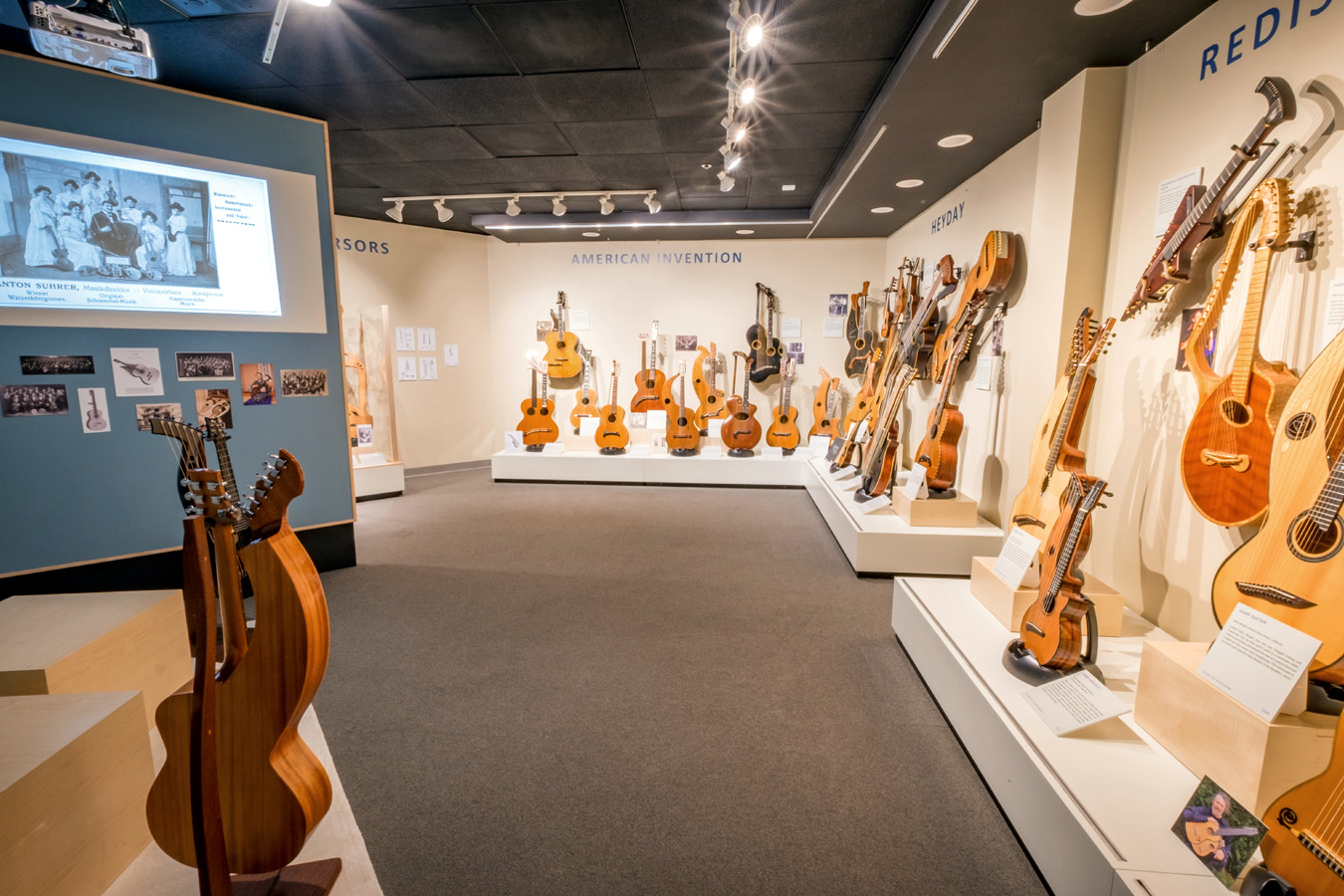
Some 200 of my historical harp guitar images were continuously projected. The printed images below all related to the instruments on exhibit.
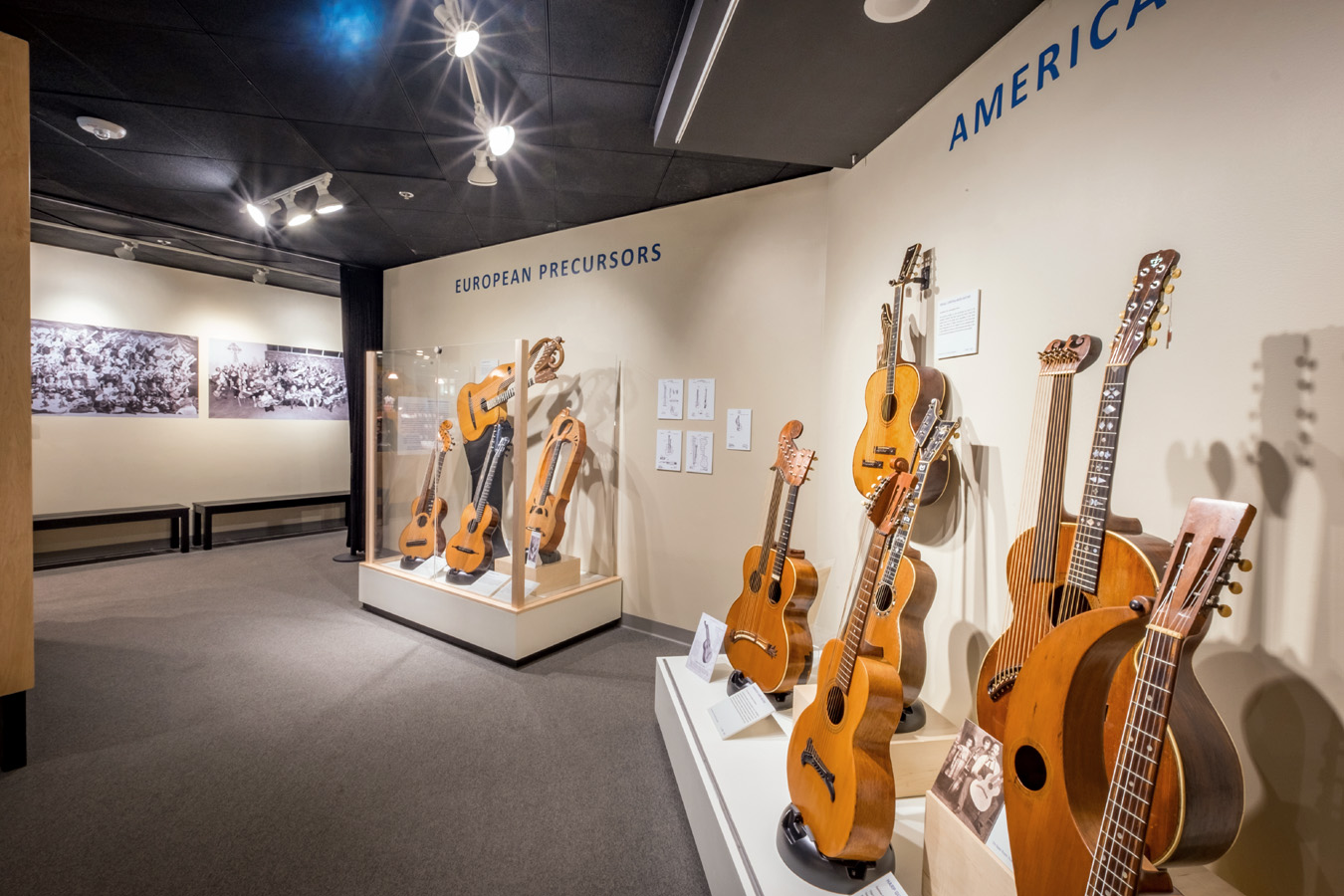
Upon exiting the gallery, visitors were stunned by the two largest “gatherings” of harp guitarists ever. One from 1902 (Lester Payne’s Orchestra), the other from 2015 (the 13th Harp Guitar Gathering).
Since the exhibit couldn’t last forever, I’m thrilled that the museum chose this event to produce their first-ever exhibit catalog. All 40+ instruments in the exhibit are presented in full color along with associated ephemera. It expands upon the exhibit by giving a (surprisingly complete, if I do say so myself) overview and narrative of the “remarkable story of the harp guitar in America.” The full run has been sold out but has been uploaded via PDF – see info at Harp Guitar Music.
It was remarkable, indeed.

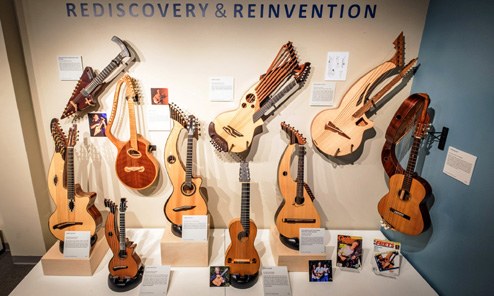
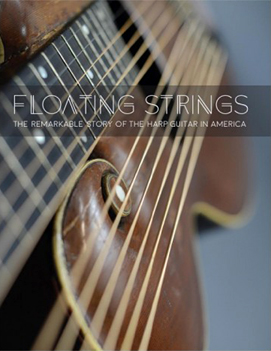

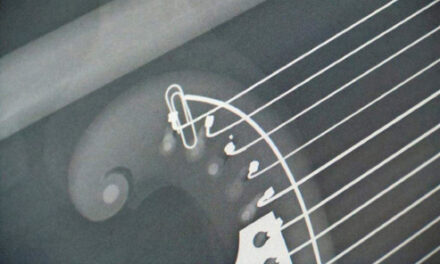

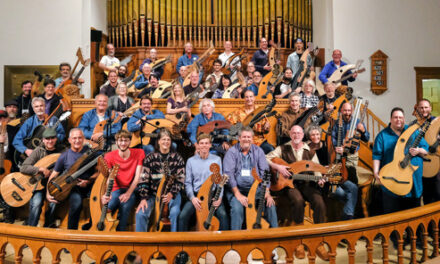
What a phenomenal collection! I’m sure you had everything to do with why it looks great! I hope there were lots
of youngsters who saw the exhibit and now hope to learn how to play one of these harp-guitars. Thanks for posting this walk thru. S~
Thank You Gregg,
for pouring your heart and soul
into this huge project.
We’re all richer because of your passion
to show and tell the world about this
intriguingly ever evolving instrument.
People all over the world will be dazzled by
the beautifully done displays in these photos.
Great job Gregg, also to everyone who
participated in this project.
Such a huge achievement Gregg. You have enriched so many lives, including mine, with your body of work and research. I wish I could have got there to see it but will have to just admire from afar. Hats off to you!